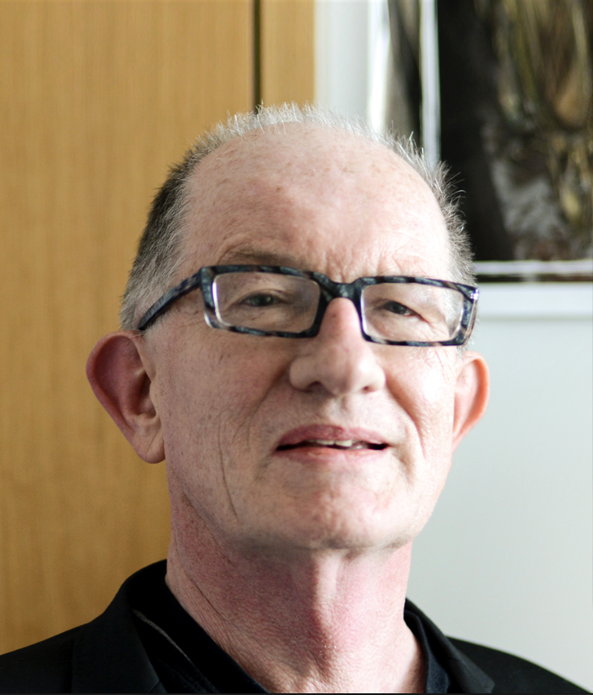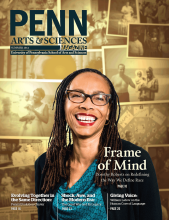The summer of 2014 marks the 100th anniversary of the outbreak of World War I. The introduction to modern, global warfare, the Great War left over 15 million dead—including as many as 7 million civilians—and redrew the map of Europe. In violently ushering the world into the modern era, the conflict created a wake of events from the Bolshevik revolution and fascism to the 1918 influenza pandemic, uprisings against colonial powers, the Great Depression, and ultimately World War II.
We spoke to faculty from a range of disciplines—comparative literature and the history and sociology of science, as well as history—for their perspectives on the Great War and its legacy.
PETER HOLQUIST
Associate Professor of History
Q: You wrote that the violence of the Russian civil wars was the most advanced case of a more extended European civil war, beginning with the Great War. Why do you describe the period in this way?
It is crucial to see Russia’s Revolution emerging out of the war. Russia did not transition into revolution from its peacetime, 1914 guise, but—in a fundamental way—from a society which was re-structuring itself from 1914 to 1917 to wage total war. Many of the tools used by the Soviet state in fact evolved from tools developed in the First World War (surveillance, food supply, political violence). World War I served as an important bridge from pre-1914 Russia to the Soviet Union.
Second, our understanding of European history equally benefits from including the Russian Revolution as part of the overall story. Most accounts—especially most accounts in the English language—focus on the conduct of war from 1914 to 1918, with a special focus on the Western Front. In this standard narrative, the war ended either with the November 1918 Armistice or the 1919 Paris Peace Conference. But for most of Europe, the experience was more similar to that of Russia: The war did not end neatly with a peace, but in an extended paroxysm of revolutions, civil war, and domestic conflict. It was this experience of postwar revolution that gave birth both to Nazism and Bolshevism.
There are good reasons why the historical literature has focused on “the usual suspects”—England and Germany first and foremost—to the detriment of other key players, such as the Austro-Hungarian and Russian empires. One major agenda of the 1919 Paris Peace Conference was to assign blame for the war, as well as reparations. It was a snapshot of the victorious postwar coalition—and, in protest, of the defeated foe, Weimar Germany. It did not include states which ceased to exist—such as Austria-Hungary and Imperial Russia (or Russia in any guise, in fact). The massive documentary publications produced by interwar states to prove the rightness of their claims was as much about the relative responsibility and postwar guilt only of interwar states, not about the dynamics of actual players in 1914 and during the war. Because Russia was not party to the debates of 1919 and after, they to a large degree dropped out of the historical literature and the massive interwar documentary publications, on which historians still rely.
Q: One hundred years on, how would you summarize the war’s legacy?
The conventional—and correct—answer would be two words: “fascism” (Italian and German) and (Soviet) “Bolshevism.” The political ideologies of both the radical right and radical left emerged out of the First World War. Many of the key actors in both movements were forged in the wars and civil wars of the 1914-1924 period.
To this answer, I would add one more: de-colonization, avant la lettre. The First World War witnessed the end of empire on the continent of Europe—with the collapse of all the dynastic land empires. One might say that the First World War, then, led to the de-colonization of Eastern and Central Europe—and that World War II would extend this process to Asia and Africa. The Great War also saw the emergence, post-1919, of a legal and political order marking a transition from the traditional colonial order: the League of Nations mandate system.
Peter Holquist is the author of Making War, Forging Revolution: Russia’s Continuum of Crisis, 1914-1921.
FREDERICK R. DICKINSON
Professor of History
Q: What changes did Japan go through in the wake of World War I, and what led to the country’s military expansion in the 1930s?
Japan’s experience in the First World War highlights the profound impact of the Great War far from the Western Front. Historians of European and American history routinely describe the war as the true start of the twentieth century. This is the case for Japan, as well. Japanese shipping and textiles boomed with the withdrawal of European power from Asia and helped transform Japan between 1914 and 1918 from an agricultural to a largely industrial economy. Craving for Japanese economic and military aid, moreover, catapulted Japan during the war from a regional to world power. Most importantly, the calamitous destruction of Europe between 1914 and 1918 raised serious questions about European standards of civilization (to which Japan had turned in its construction of a modern state in the latter nineteenth century), spurring a profound political, economic, social, and cultural restructuring of interwar Japan on a par with the latter nineteenth century nation-building effort. Japanese military expansion in the 1930s is less an extension of Japanese war aims from the latter nineteenth century or the First World War (as often suggested by historians) than the product of a turbulent domestic political debate over the dramatic Japanese turn to liberal internationalism after 1918.
Q: One hundred years on, how would you summarize the war’s legacy?
I agree with historian Barbara Tuchman’s assessment over a half century ago [1962] that the Great War “lies like a band of scorched earth dividing that time from ours.” It marked the beginning of the end of European global hegemony, the rise of an American century, and, with Japan’s rise as a world power, an early glimpse of the dramatic shift of global power to the Asia/Pacific region in the twenty-first century.
Frederick Dickinson is the author of World War I and the Triumph of a New Japan, 1919-1930, and War and National Reinvention: Japan in the Great War, 1914 – 1919.
JEAN-MICHEL RABATÉ
Professor of English and Comparative Literature
Q: How did World War I shift, alter, or reflect what was already underway in terms of avant-garde European modernism? Why did you choose the year you did for your book, 1913: The Cradle of Modernism?
It’s quite simple: When I began my research on 1913, I believed that I was going to discuss Modernism, art, new forms, etc. and not so much the war. Soon, I realized that the two terms, Modernism and war, were dependent upon each other. Also, I saw 1913 as the last year of a pre-war utopia of peace (“La Belle Époque” as we say in French, the long ending or drawing out of a golden age), a harmony that would be shattered one year later when it all started in August 1914. I had to change my position when I realized that 1913 was rather the moment of preparation for the forthcoming disaster, and that many observers (some in the United States, like Morton Fullerton; others in France and Italy; more in Russia, Austria, and Germany) saw the war coming. What I had taken as artistic movements seduced by various forms of Futurism were in fact cultural variations on the display of competitive power that led to the war itself.
Q: One hundred years on, how would you summarize the war’s legacy?
This is the moment when the world as we know it (including the creation of Iraq!) was shaped. We still live in a world that is the direct consequence of World War I. There was no “World War I,” but a long truce in the war, from 1919 to 1939, and then the same war went on.
Jean-Michel Rabaté is the author of 1913: The Cradle of Modernism.
BETH LINKER
Associate Professor of History & Sociology of Science
Q: What sorts of pressures led to shifts in U.S. policy and practice regarding wounded veterans?
The first modernized U.S. rehabilitation program was created during World War I—at a time when both national image and the booming cost of the war weighed heavily on America’s shoulders and the government sought to reform the way in which it dealt with injured veterans and their recuperation.
Much of the philosophy behind institutionalized rehabilitation was political. Officials were well aware that during the Civil War, pension payout outpaced the total cost of the ground war. In order to counter this in World War I, the government sought to establish a program that would guarantee a soldier’s continuing contribution to the war, whether it be back on the front lines, or in a munitions factory. Back then quality of life referred less to personal happiness than it did to productivity: Can you get from point A to point B; can you open your front door and feed and clothe yourself?
Amputees were often used as props in photographs with government officials because their injuries—and remedies—were visible. But this kind of positioning often led to misplaced priorities. For example, the initiative to mass produce artificial limbs largely failed due to the government’s lack of foresight regarding the individualization of treatment. Because of these botched attempts to get injured soldiers back on their feet as fast as possible, maimed soldiers often went outside the system and reverted to more primitive technology—such as hook hands.
The intricacies of post-war rehabilitation have slowly revealed themselves throughout the years. There are important contemporary policy debates surrounding issues, like the rise in suicide rates among soldiers and post-traumatic stress syndrome’s lasting effects, which need to be continually reevaluated.
Q: One hundred years on, how would you summarize the war’s legacy?
Since institutionalized rehabilitation was largely nonexistent, the military had to construct a model. Up until World War I, hospitals were generally considered places of disease, not centers for recuperation. The reimagining of the hospital as a place for convalescing spurred a societal transition that saw the eventual privatization of physical therapy and other rehabilitation services, which in turn led to the establishment of civilian practices.
Beth Linker is the author of War’s Waste: Rehabilitation in World War I America.








